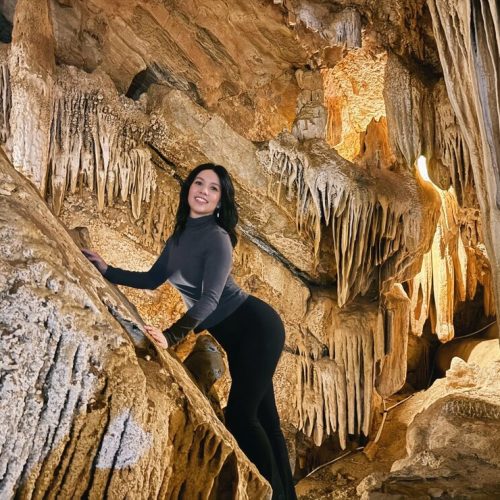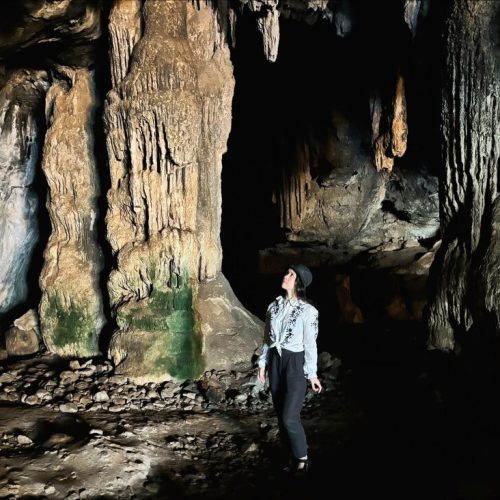Museum of the Month is a brand new series in which I share my experiences of visiting unique and often strange museums from around the world. My aim is to rebuff the notion that museums are boring!

The Hunterian Museum is a treasure chest of anatomical oddities to satisfy even the most macabre amongst us.
As soon as I entered the doors and clapped eyes on the Crystal Gallery, a large room with eight floor-to-ceiling glass cases crammed with thousands of preserved human and animal specimens, l discovered what it might be like inside the mind of a mad scientist.
The Hunterian Museum houses one of Europe’s oldest and largest collections of anatomical, pathological and zoological specimens available for public viewing, and is the brainchild of John Hunter, an 18th century surgeon. Hunter was fanatical about medical study and to satiate his interest, he amassed what was to be the finest anatomical collection of its time. Among the 14,000 specimens (which have now grown much larger) were preparations to illustrate healthy human anatomy and diseased specimens, many of which are on show at the museum.

Some of these diseased specimens include syphilitic human skulls chewed away by the corrosive side-effects of the disease. Seeing these were a revelation as I didn’t think syphilis was capable of impacting sufferers in such a physical and mental way. My thoughts quickly turned to poor old Nietzsche and Schubert going insane and now I can see why!
Another fascinating part of the ‘skull section’ is seeing what a juvenile skull looks like when an area of surface bone has been removed to show the adult teeth developing within the jaw. As it happens, it looks really, really, really creepy.
Lots of the specimens are well labelled and have a story to tell, like the 7ft 7” skeleton of Charles Byrne, the ‘Irish Giant’. Byrne’s height attracted a lot of attention in the small village in Northern Ireland where he grew up so he went to seek his fortune in London. Soon enough he became one of London’s most famous curiosities, but his new fame and wealth brought with it new temptations that proved difficult to avoid. At the young age of twenty-two he died from excessive drinking and after his death in 1783, Hunter purchased his body for five hundred pounds, the equivalent of fifty-thousand pounds today. Now his skeleton is one of the main attractions of the museum.

Another section of the museum is the collection of human foetuses. I found myself staring at them with bewilderment. If you suffer from a light stomach, I suggest moving swiftly on.

A Sculpture by medical artist Eleanor Crook
Once upstairs, the collection of oddities doesn’t stop. However, it does move somewhat more into the modern world as the exhibition deals with how surgery has progressed over the last century.
I discovered many surgeons became specialised in new techniques largely out of necessity to treat badly injured soldiers and airmen of WW1. New techniques were devised to treat specific areas of the face and body, including reconstructive plastic surgery. Accompanying the text are various sculptures (see above) and some before and after photos of badly disfigured patients who received ground-breaking operations to help normalise their appearance.
I felt this collection of the museum provided a thought-provoking finish to the exhibition. It really highlights the progress that mankind has made in technology, drug therapies and biosciences. It made me realise that we are fortunate to be living in the time we do, with such rapid and fast improvements in science and healthcare.

Don’t miss on display the old-fashion picture box. If you look inside you will see before and after photos of patients who have undergone constructive facial surgery.

There’s also a display showing a wide range of anatomical prosthetics, including a false nose given to a woman who lost her own nose as a result of syphilis.
If this museum looks and sounds like your cuppa tea, then I also recommend the Grant Museum of Zoology and the Wellcome Collection too.
General information
How to get there: 3 minutes’ walk away from Holborn Station, located directly outside Lincoln’s Inn Fields.
Admission Fee: Free (however an online booking is still required to enter)
Opening Times: Tuesday-Saturday 10:00am to 5:00pm
Website: www.rcseng.ac.uk/museums










11 responses
That syphilitic human skull is just jaw-dropping! No pun intended. Also, I remember reading that WWI field surgeons often had no form of anesthesia for the soldiers. Good post, Shing! 🙂
nice pun my man
This is true Mike! And even beforehand, when anaesthesia had been discovered some surgeons still preferred to keep their patients alert! Gosh, we’ve come a long way since those days.
I know, the remains of people who suffered from syphilis fed my morbid fascination with the human body!
This sounds so fun and quirky. I like the idea of going to a museum that will put me inside the head of a mad scientist. Also, do you watch Boardwalk Empire? I’m talking Richard Harrow…
Alas, Boardwalk Empire was not on my radar before reading this comment, so I’ll have to give it a go and see who this Richard Harrow fellow is for myself, I’ve just seen it’s HBO which automatically means I’m going to like it! I’ve got a huge hole in my life that needs filling after Breaking Bad. I wonder if Boardwalk Empire is good enough to fill the void..? I’ll keep you posted.
Sharing your experiences of visiting unique and often strange museums from around the world was a great idea, love it!
This museum is the weirdest I have ever seen, no joke! A lot of blood, too much for me! Can’t wait to explore it!! 😀
Glad you like the idea Agness, it’s a great incentive for me to start exploring London since moving down here (although the museums in this series won’t be exclusive to London!)
Haha it’s one of the weirdest ones I’ve visited too (no.1 is still the Penis museum in Reykjavik though, it’s going to be hard to beat that one but it will be fun trying!). Make sure you don’t miss this museum when you’re next in London, and let me know if you do come, I’d love to meet you!
Great idea for a series. This museum is interesting but certainly one of the most bizarre I’ve read. I’m very disturbed by all those human foetuses even more so than seeing skeletons at the bone church. I hope this doesn’t give me nightmares tonight, Shing 🙂
When it comes to museums, the more bizarre the better! 🙂 I know the foetuses are quite disturbing, especially the quadruplets which all sadly died at birth in the Eighteenth Century. At the time they were of great scientific interest, understandably. I think you and your kids would find this museum fascinating as well ghoulish Mary!
Yerk ! Some pparts of this museum are absolutely disgusting ! I understand you find art museums bored, but human foetuses are not really a solution ! I think you would like the London Dungeon, which is horrible too… And yet this article was interesting, but are the foetuses real ? I hope no…
Hi Jenny! I love art museums as well as the weird and wacky ones! I’ve been meaning to go to the London Dungeon so will definitely take you up on your recommendation. Yes, these foetuses are real, they were for scientific progression at a time when science of the body was developing at a rapid and necessary pace – definitely not a museum for the faint-hearted!